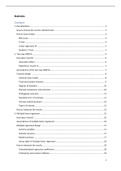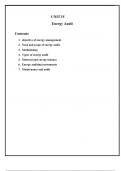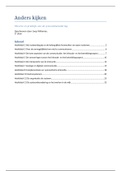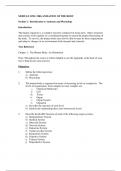Summary
Summary Statistics 2
- Module
- Institution
This summary covers a recapitulation of Statistics 1 and covers the whole course of Statistics 2. Besides explanation of the topics, this summary also contains examples of statistical experiments and dives deep into explaining data interpretation. The statistical jargon/terminology needed to under...
[Show more]






